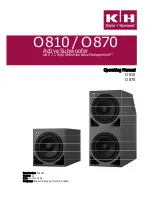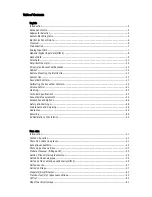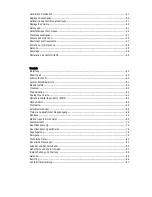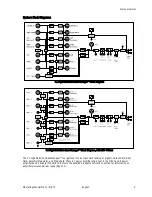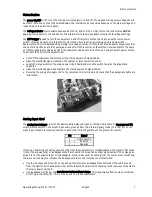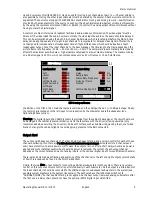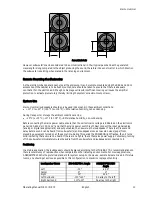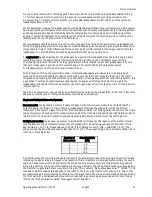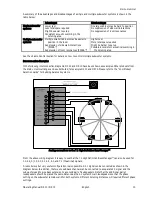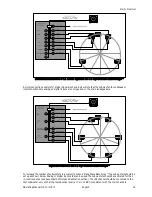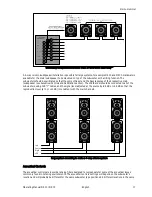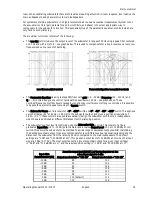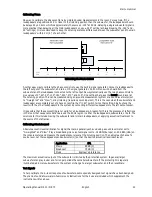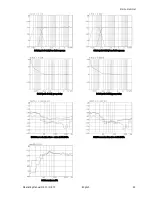
Klein + Hummel
Operating Manual O 810 / O 870
English
10
Filter Card
The filter card contains bass management processing, subwoofer filtering, acoustical controls and a remote
control input socket:
The Power On light (red) is illuminated when power is applied to the subwoofer, the mains power switch is on,
and the 12 V DC remote control are in a state to turn on the subwoofer. This light blinks during the power-up
phase of the internal microcontroller, and flashes if the protection system is activated. If the latter happens, turn
down the input signal, use a bigger subwoofer, or add additional subwoofer(s) to the system.
The Bass Management light (green) is illuminated when bass management is on.
The Bass Management switch turns on the bass management. This inserts a 4
th
order 80 Hz high pass filter into
the signal path of each main channel output and routes content below 80 Hz to the subwoofer. Reproduction of
the LFE channel is unaffected by the setting of this bass management switch.
The Rear Channel Bass Management switch define whether the rear channels (left surround, right surround, left
back and right back) are included in the bass management processing. Some sound engineers prefer to bass
manage the rear channels, others do not. The use of this switch avoids having to unplug the XLR connectors for
these channels. Reproduction of the LFE channel is unaffected by the setting of this bass management switch.
The Volume Control switch defines whether the remote volume control facility is activated or not. There is no
attenuation of the input signals when the remote volume control is deactivated, so care should be taken when
adjusting this switch. If a remote control device (SRC 1, SRC 2, or RS-232) is disconnected from the subwoofer,
remote volume control is automatically disabled (gain through the bass management defaults to 0 dB).
The Signal Generator switch applies an 80 Hz sine wave signal to the left channel input (on the DIM 4 it is digital
input 1, subframe A). This low frequency tone will be audible through the subwoofer and the loudspeaker
connected to the left output socket. It is used for setting the phase control (see Calibrating Phase section).
The Subwoofer Gain, Subwoofer Phase, Parametric Equalizer, and Low Cut controls are described in the Acoustical
Controls section below.
LFE channel reproduction depends on the LFE mode settings (see LFE Mode description below) and is unaffected
by the setting of either of the bass management switches.
The LFE Gain switch applies 0 or +10 dB gain to the LFE channel. For Dolby Digital and DTS formats only, one
10 dB boost is required in the monitoring system somewhere between the LFE channel fader on the mixing
console and the listener’s ear. This boost can be performed in the monitoring matrix (console or external), in a
decoder output stage (surround sound processor or DVD/Blue-ray disk player), or in the 7.1 High Definition Bass
Management System™. Before using this switch, check that it has not been applied somewhere else in the signal
path. Too much LFE channel gain results in less LFE channel level in the mix, and vice versa.
The LFE Mode switch has four settings (the default is LFE
→
SUB + L/R (>80)) designed to process the LFE
channel in different ways for different system configurations and source equipment. The LFE channel must be
applied to the dedicated LFE input channel for this processing to work (“LFE” on the analog input card, or
input 2, subframe B on the digital input card). Reproduction of the LFE channel is unaffected by the setting of the
bass management switches. The modes and their use are:
1.
LFE
→
SUB + L/R (>80)
Up to 80 Hz, the LFE channel is reproduced by the subwoofer. Above 80 Hz, the LFE channel is re-routed to the
left and right outputs. A 6 dB electrical attenuation is applied to compensate for a 6 dB acoustical gain seen
when reproducing one signal using two loudspeakers. This mode works with all formats and is consistent with
the standard downmix coefficients seen in consumer decoders. Additionally, this mode is useful for detecting
higher frequency signals (up to the upper cut-off frequency of the left/right loudspeakers) in the LFE channel
that should otherwise be avoided.
2.
LFE
→
SUB ONLY (<80)
The LFE channel is reproduced up to 80 Hz in the subwoofer only. This comes from a recommendation by
Dolby and THX to “pre-filter” the LFE channel and is used to simulate consumer decoders that do not
reproduce the upper part of the LFE bandwidth.
Summary of Contents for 0 810
Page 2: ......

